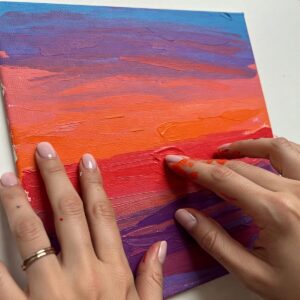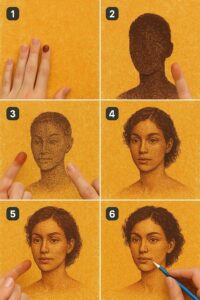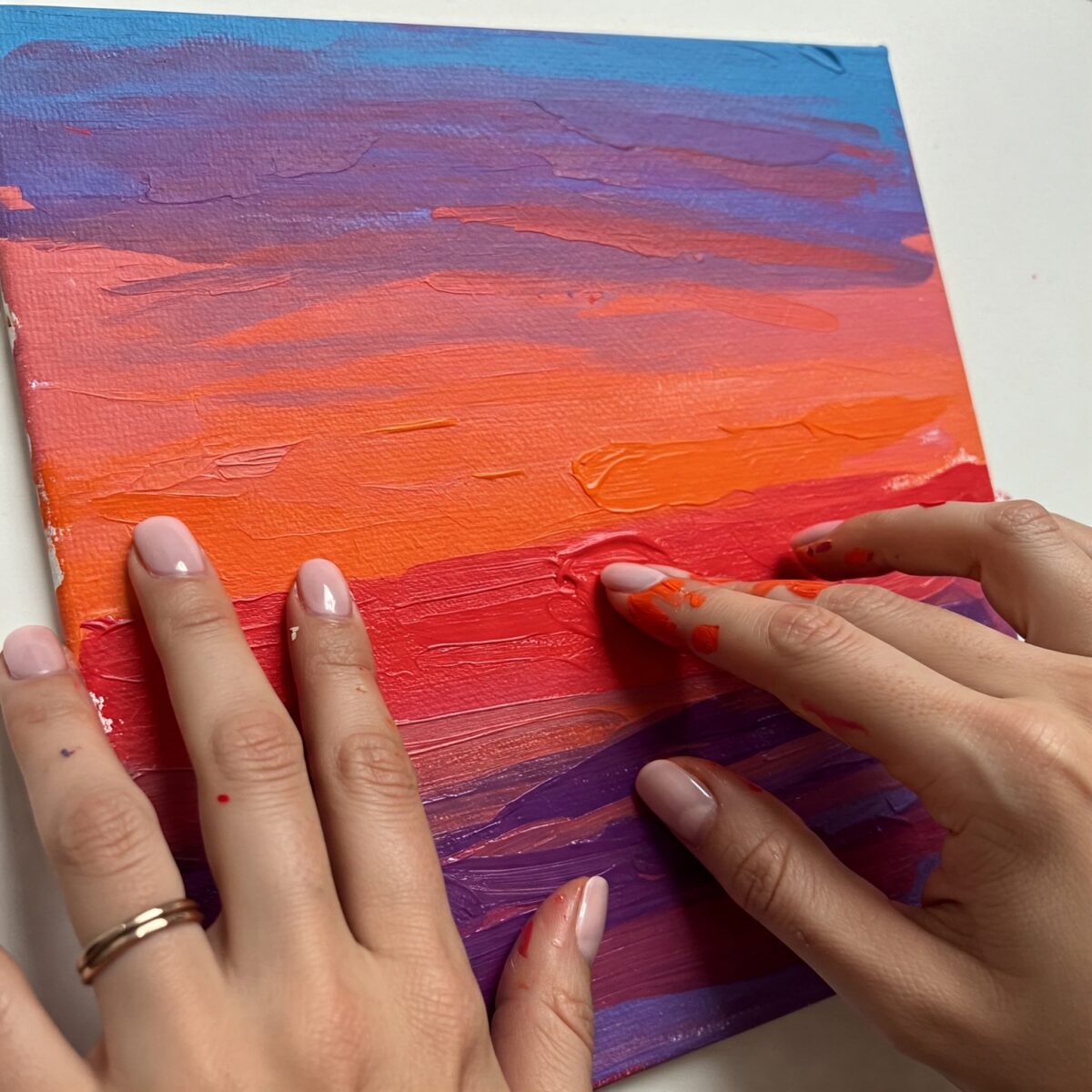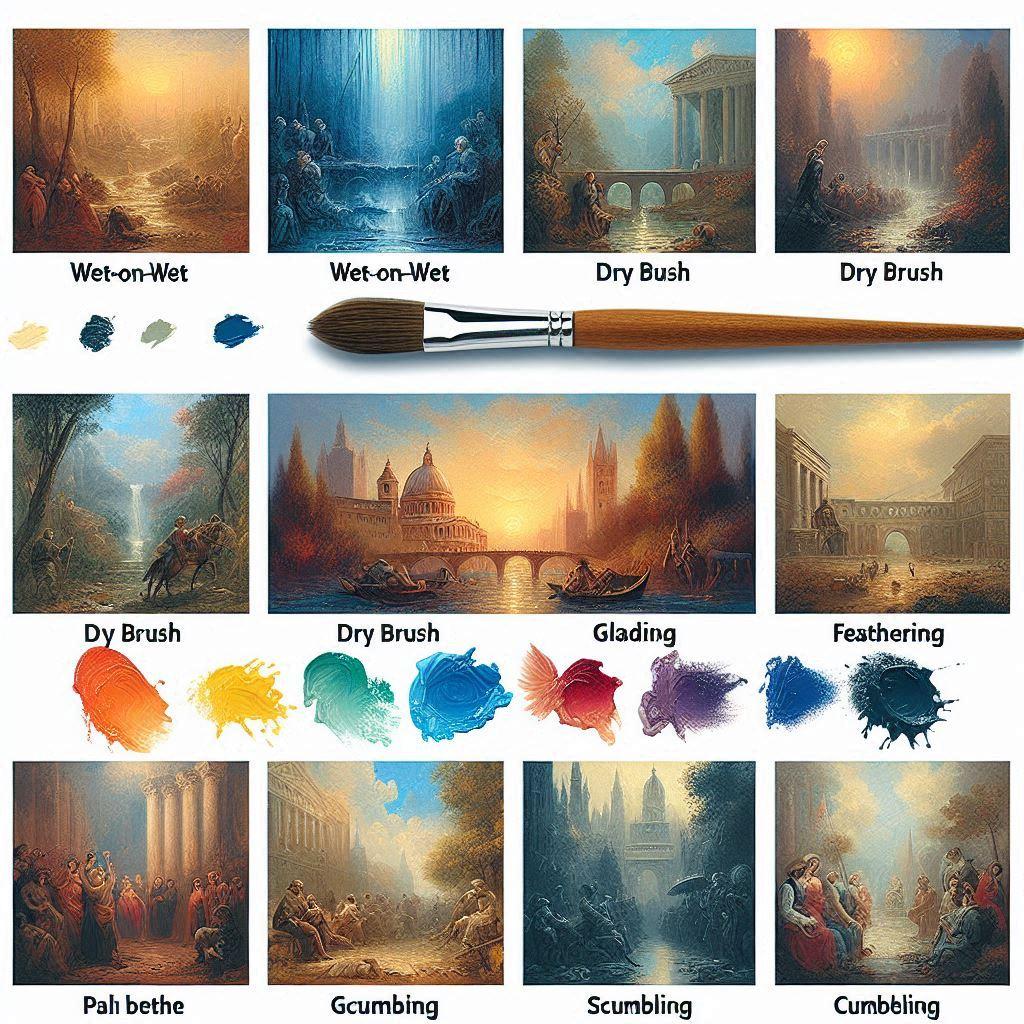Finger painting isn’t just for kindergarten classrooms anymore. Adults across the world are rediscovering this tactile art form and creating astonishingly sophisticated artwork using nothing but their hands, high-quality paints, and various surfaces. As someone who has explored finger painting techniques for adults both personally and professionally, I can tell you that the process is not only incredibly freeing but can produce gallery-worthy results that might surprise you. When you remove the brush from the equation, you create a direct connection between yourself and the artwork, resulting in pieces that capture emotion and movement in uniquely expressive ways.
Key Points:
- Finger painting for adults uses different techniques and materials than children’s finger painting
- The tactile connection creates uniquely expressive artwork
- Professional-grade supplies dramatically improve results
- Finger painting offers therapeutic benefits alongside artistic outcomes
- Various techniques can create surprising detail and texture
- Anyone can learn, regardless of artistic background
Why Adults Should Reconnect with Finger Painting

Remember the pure joy of squishing paint between your fingers as a child? That sensory experience doesn’t have to end with childhood. Adult finger painting combines that tactile pleasure with sophisticated artistic techniques to create truly remarkable artwork. Unlike brushes that create distance between you and your creation, finger painting allows for direct expression – your emotions transfer immediately from mind to canvas through your fingertips.
Many professional artists like Iris Scott have embraced finger painting as their primary medium, creating stunning, detailed works that sell for thousands of dollars. This direct application method allows for unique textures and blending effects that simply can’t be achieved with brushes alone.
“When I finger paint, I feel a direct transfer of energy from my body to the canvas. There’s no tool mediating that connection – it’s raw and authentic expression.”
Iris Scott, Professional Finger Painting Artist
Essential Finger Painting Techniques for Adults
Successful adult finger painting requires techniques that go far beyond the simple smearing motions we used as children. By utilizing different parts of your hands and controlling pressure and movement, you can create remarkable detail and texture.

Basic Techniques to Master First
- Flat Palm Press – Create broad backgrounds by coating your palm with paint and pressing it against your surface
- Fingertip Dots – Use fingertips to apply dots that can form intricate patterns or be blended for textured effects
- Side-of-Hand Sweeps – Create defined lines and shapes by using the side of your hand like a painter’s knife
- Nail Detailing – Use your fingernails (carefully!) to scratch into wet paint for fine details or texture
- Knuckle Texturing – Press knuckles into wet paint to create unique textural patterns
These fundamental techniques can be combined and built upon to create increasingly complex works. For landscape finger paintings, try using broad palm strokes for skies, fingertips for detailed foliage, and side-of-hand techniques for mountains or horizon lines.
Advanced Blending Techniques
Color blending is where finger painting truly shines. The heat and oils from your skin create blending effects that brushes simply cannot replicate.
| Technique | Method | Best For |
|---|---|---|
| Gradient Blending | Use slightly overlapping finger strokes with decreasing pressure | Skies, water, sunset scenes |
| Swirl Blending | Use circular motions with varying pressure | Abstract designs, galaxy effects |
| Cross-Finger Blending | Apply two colors side by side and blend with pinched fingers | Sharp color transitions |
| Dapple Blending | Lightly tap fingertips over two wet colors | Textured blending effects |
| Pull-Through | Drag fingers through multiple wet colors | Marbled effects |
Learning to control these blending techniques is crucial for creating depth in your paintings, particularly when working on abstract pieces or landscapes.
Choosing the Right Supplies for Adult Finger Painting
Quality materials make all the difference when finger painting as an adult. Children’s finger paints simply won’t produce professional results.

Paints
For serious adult finger painters, consider these options:
- Heavy-body acrylics – Offer vibrant colors and good texture but dry quickly
- Slow-drying acrylics – Provide more blending time
- Oil paints – Excellent for blending but require solvents for cleanup
- Professional finger paints – Specially formulated for adult art with rich pigments
Brands like Golden, Liquitex, and Sennelier offer excellent options for finger painting adults. Many artists are also exploring water-based oil paints which combine the blending qualities of oils with easier cleanup.
Surfaces
While children typically finger paint on paper, adults have many more options:
- Canvas (primed with gesso)
- Heavyweight watercolor paper
- Wood panels
- Glass
- Specialty finger painting boards
- Yupo paper (synthetic paper with unique blending properties)
The texture of your surface will dramatically affect your final results, so experiment with different options to find what works best for your style.
Hand Protection and Cleanup
Since adult finger painting often uses professional art materials rather than washable kids’ paint, proper skin protection is important:
- Barrier creams – Apply before painting to protect skin
- Finger cots – Protect fingers while maintaining sensitivity
- Textured gloves – Create interesting effects while protecting hands
- Artist’s soap – Specially formulated to remove pigments from skin
Always have a hand-washing station ready, especially when working with oil-based materials that require solvents for cleanup.
Creating Detailed Artwork with Just Your Fingers
One of the most surprising aspects of adult finger painting is the level of detail that’s possible. While the medium naturally lends itself to expressive, loose work, skilled artists can create remarkably precise images using proper techniques.

For beginner finger painting techniques for stress relief, focus first on expressive abstract works that don’t require detail. As your skills develop, try these approaches for adding detail:
- Work from background to foreground
- Allow layers to dry between applications
- Use fingernails for fine lines
- Apply small amounts of paint to fingertips for precise application
- Use the side of your pinky finger for thin lines
- Try finger painting tools like silicone shapers for the finest details
Many finger painting professionals also incorporate minimal tool use for the most detailed elements while keeping the majority of the work hand-applied.
Therapeutic Benefits of Finger Painting for Adults
Beyond creating beautiful artwork, finger painting offers significant therapeutic benefits. Art therapists often recommend tactile art creation like finger painting for stress relief, emotional processing, and mindfulness practice.

The direct contact with paint engages our sensory system in ways that few other activities can, creating a deeply immersive experience. Many adults report that finger painting sessions become almost meditative, allowing them to reach a flow state where worries fade away.
Research by the American Art Therapy Association has shown that tactile art activities can:
- Reduce stress hormones
- Improve mood
- Enhance self-awareness
- Process complex emotions
- Promote mindfulness
- Improve fine motor skills
Consider exploring expressive art therapy through finger painting as a complement to your artistic practice. Many community centers and art studios now offer finger painting workshops for adult beginners specifically focused on the therapeutic aspects of the medium.
Inspiration and Getting Started
If you’re ready to try finger painting as an adult, start by gathering inspiration. Contemporary abstract art can provide excellent reference points for techniques and approaches. Artists like Zaria Forman, who creates stunning finger-painted landscapes, demonstrate the incredible potential of this medium.
For your first project, try creating a simple abstract sunset using gradient blending techniques. The forgiving nature of this subject makes it perfect for beginners while still producing impressive results.
Join online communities dedicated to finger painting or tactile art creation to share your work and learn from others. Many artists document their finger painting process on Instagram or TikTok, providing valuable visual instruction.
Preserving and Displaying Your Finger Paintings
Once you’ve created your masterpiece, proper preservation ensures it will last. Acrylic finger paintings should be sealed with a quality varnish to protect the surface. Oil-based works will need several months to fully cure before varnishing.
Consider professional framing for your best pieces – a quality frame elevates finger painting from craft to fine art. Many finger painting artists also explore different canvas shapes to create unique display opportunities.
Conclusion
Finger painting techniques for adults offer a unique approach to artistic expression that combines tactile pleasure with sophisticated results. By using quality materials, mastering various hand techniques, and applying the principles of composition and color theory, adults can create truly remarkable artwork using nothing but their hands. Whether you’re seeking a therapeutic creative outlet or wanting to develop a distinctive artistic style, finger painting provides a direct connection to your creativity that traditional brushwork simply can’t match. The surprisingly beautiful results possible through adult finger painting might just inspire you to put down your brushes and get your hands dirty with this expressive art form.
FAQ: Adult Finger Painting
Is finger painting good for adults?
Yes, finger painting is excellent for adults! It provides stress relief, encourages mindfulness, develops tactile sensitivity, and allows for unique artistic expression that can’t be achieved with brushes. Many art therapists recommend it for emotional processing and stress management.
What kind of paint to use for finger painting?
Adults should use professional-grade paints rather than children’s finger paints. Heavy-body acrylics, slow-drying acrylics, professional finger paints, or oil paints are all excellent choices. Look for non-toxic formulations if you’ll be painting frequently.
Can you use acrylic paint for finger painting?
Yes, acrylic paints work well for finger painting. Choose heavy-body acrylics for texture work or slow-drying acrylics if you want more blending time. Always use barrier cream to protect your skin, as acrylics can be drying, and wash hands thoroughly after painting.
How do I protect finger painting artwork?
Acrylic finger paintings should be sealed with 2-3 coats of archival-quality varnish after the paint has fully dried (typically 24-48 hours). Oil-based finger paintings need to cure for several months before varnishing. Professional framing with UV-protective glass offers additional protection.
Is finger painting therapeutic?
Absolutely! Finger painting engages the sensory system directly, creating a mind-body connection that can be deeply therapeutic. It’s frequently used in art therapy to help process emotions, reduce stress, and promote mindfulness. The tactile nature of finger painting can be particularly helpful for anxiety and stress reduction.
How can I host an adult finger painting party?
Plan an adult finger painting party by providing quality materials (not children’s finger paints), protective coverings for clothing and furniture, proper hand-cleaning supplies, and perhaps wine or refreshments. Choose a simple project all skill levels can enjoy, like abstract landscapes or emotion-based abstract art. Consider hiring a professional finger painting artist to provide guidance.



